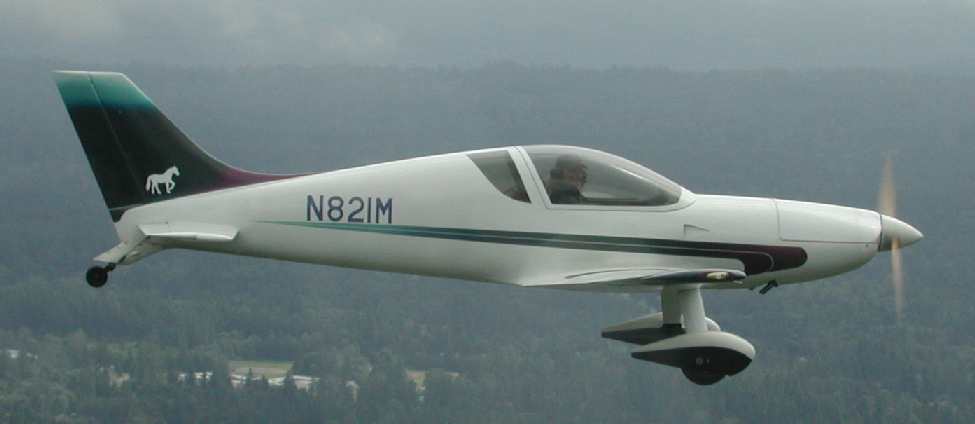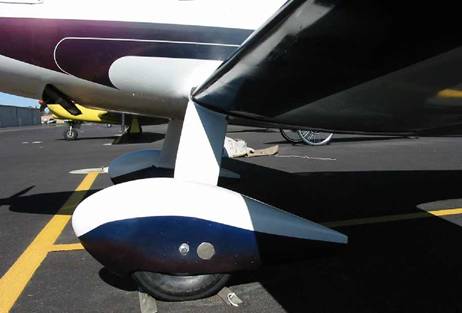Pulsar Builder’s Support
The following things are available from me to support Pulsar builders and pilots:
– Builder’s Manuals with Improvements
– Gross Weight Increase to 1060 lb for Pulsar 1 (Wood Wing)
– Taildragger Conversion
If you are new to Pulsars, check out http://www.matronics.com/Navigator Pulsar-List and sign up for the email list. That is a good way to get to a lot of information about Pulsars.



Pulsar Tail Wheel Conversion and Main Gear Reinforcement
I designed a tailwheel conversion for the Pulsar XP and am making the instructions and drawings available. With it, you can convert a flying Pulsar with a nose gear to the tailwheel configuration. The main gear is moved forward in conjunction with the tailwheel installation and the nose gear is removed. I flew my Pulsar for 40 hours with a nose gear before I converted it, so I have a direct comparison of both versions. I have now flown it > 900 hours with the tailwheel. Watch a video showing my Pulsar here:
http://youtu.be/xgMFGVMpmZ0
The cost for the documentation is $145 (electronic format).
My design differs from the standard factory Pulsar taildragger design and offers a number of advantages. It is more robust and more suitable for operation on rough surfaces. Because the main gear is further forward than the factory installation, there is no tendency to nose over with full use of the brakes. The steerable, full-swiveling tailwheel improves ground-handling over the non-steerable nose gear and eliminates the possibility of shimmy. With the tailspring fairing, directional stability is improved and the crosswind capability is raised to 15-20 kts. It offers more ground clearance for the horizontal tail, which improves visibility over the nose compared to the factory taildraggers. The drag reduction from removing the nose gear increases the speed by up to 5 kts.
The design of this tail wheel attachment and new main gear attachment is suitable for the Pulsar XP up to a maximum weight of 1060 lbs. It does not change the gross weight if your current gross weight limit is lower. The suitability for other Pulsar models must be evaluated on a case by case basis.
It will not work for Pulsar Series 2 which have a pair of heat exchangers mounted on the cabin floor in a plenum whose inlets are scoops at the wing root.
The fuselage sits a little lower with the main gear moved forward, but the propeller ground clearance is sufficient for a 64” diameter propeller (11.5 inch with tailwheel on the ground on mine).
The Pulsar taildragger handles very well on the ground and is easier to land than most other taildraggers. It can handle >15 kts crosswind, I have even taken off and landed with 20 kts but that requires high proficiency in the Pulsar. The Extra 300 comes closest to the handling of a Pulsar taildragger, it is just a lot heavier.
The CG does not really change with the gear conversion because moving the main gear forward is basically offset by adding the tailwheel and removing the nosegear. The weight of the tailgear is less than that of the nosegear, but the reinforcements of the fuselage and main gear attachment add a little weight. I estimate that in the end it is about the same total weight.
The time needed to perform the conversion are 20 hours for the tailwheel parts fabrication and installation and 94 hours to fabricate the parts for the main gear attachment, moving the main gear forward and removal of the nose gear (that’s how long it took me). Not included in this time is the fabrication of fairings.
Email me for more information at paqs345@gmail.com
Builders Manuals with Improvements
After operating my Pulsar for >20 years, I noticed a number of durability and other issues. I have come up with numerous improvements and reinforcements for the original Pulsar design, which I have incorporated into my Pulsar. Some of the failures I have experienced have left me grounded, sometimes at another airport, and I wish someone could have told me about the improvements beforehand.
I have scanned my builder’s manuals and added my notes and descriptions to them so that they are available to other Pulsar owners and builders.
There are four files covering the construction (Fuselage, wing and engine, pdf) and a flight manual as a Word document so it can be used as a template and be customized for each individual Pulsar. The flight manual also contains observations and advice on the flight characteristics of the Pulsar, which will help you if you have not flown a Pulsar before.
Most modifications can be made to a completed Pulsar, while others are best incorporated during the build process. All are basically applicable to a Pulsar XP with a Rotax 912 engine, but most also apply to other Pulsar models as well (excluding the SP100).
Examples:
Proper aileron bellcrank attachment, fine adjustment mechanical elevator trim, engine installation tips, fuel tank sealing, fuel system improvements, rudder hinge improvement, better exhaust tailpipe support, etc.
The cost is $33.00 for all the documents (electronic format, file size about 33 Mb).
Gross Weight Increase to 1060 lb for Pulsar 1 (Wood Wing)
A number of Pulsar 1 kit owners have expressed the wish to upgrade their Pulsar to a 4-stroke engine. This is generally not possible due to the higher weight of the engine and the low gross weight their structure was designed for.
I have examined the wood wing structure in detail, recalculated the loads for a gross weight increase and came up with a number of reinforcements which brings the kit up to the same strength as the Pulsar XP. This allows the use of a Rotax 912 engine and increases all other limitations to those of a Pulsar XP.
The reinforcements can only be incorporated before any assembly of the kit has taken place. It is not possible to upgrade a Pulsar 1 after it has been built.
Contact me if you are interested in the upgrade. The cost for the documentation is $800 and it includes the manuals with improvements (all electronic format).
